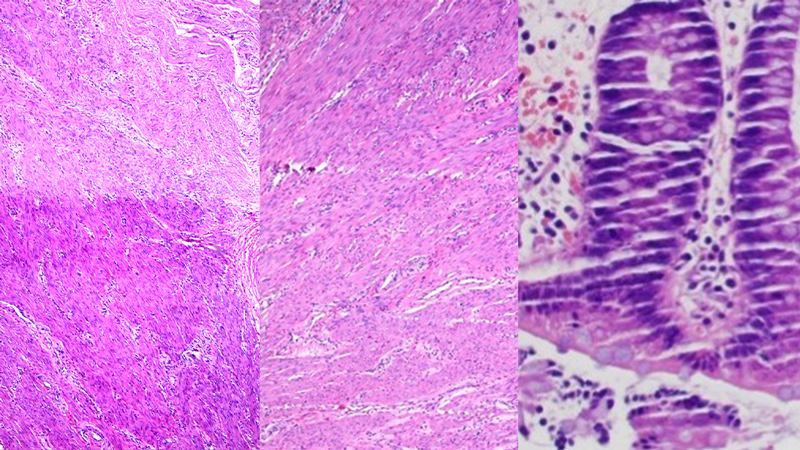In the opening of this series on microtomy we discussed factors involved in success, such as training and technique. Also discussed was an unknown intangible mystery that frequently arises. It is a mystery of why some efforts in microtomy seem to work effortlessly, and other attempts fail. Even after applying common practices of science, such as knife angle, some blocks are more difficult and seemingly impossible to section and require trial and error attempts that are difficult to explain. Learning to quickly troubleshoot problems is essential to avoid excessive shaving away and loss of tissue (particularly with biopsies) in one’s attempt to get a good section. Because there can be any number of reasons for a block not sectioning, and because the exact reason is not immediately visible, the skilled microtomist must go through a Sherlock Holmes type of deductive reasoning process where they rule out certain avenues (modified techniques) to success. The skilled microtomist learns from experience, the most probable causes of sectioning issues, then one by one employs best common troubleshooting methods to resolve the issue.
One of the most important skills developed by Histotechnologists is their ability to prioritize the most probable cause of blocks not sectioning, and not waste time and tissue with superfluous troubleshooting methods. Below is a list of artifacts. Oftentimes the same troubleshooting technique can be used for multiple issues. Other times the same technique might not work for a different block with the same issue, and a different corrective method must be employed.
Common Artifacts In Microtomy
- Knife Marks & Angel Hair
- Compression
- Lifting of Section/Ribbon on Upstroke
- Thick & Thin Sections
- Venetian Blind Effect / Washboarding
- Chatter
Probable Resolutions
- Change Blade / Clear Excessive Shavings
- Cool Block Down
- Cool Block Down / Room Temp High
- Blade or Block Holder Loose – Tighten
- Tighten Blade / Holder
- Tighten Holder / Hydrate Block



Images above illustrate artifacts of thick & thin section (left), compression (center), and knife marks and angle hair in section (right). The center image shows normal breast tissue on left and the same breast tissue on the right only compressed due to block warming.
These are all common issues, but as spoken before, there is no exact remedy for a specific artifact because a different block oftentimes requires a different remedy. Timely and direct troubleshooting in microtomy requires the technologist to observe these three general areas:
- Is the issue mechanical, as in blade, knife holder, or microtome related?
- Is the issue environmental, as is room temperature, humidity, or air current related?
- Is the issue processing related, as in poor fixation, over/under dehydration, etc?
In the case of ‘A’, check all fittings and locking systems on the blade holder for the blade and assembly and make sure they are tight; change the blade if necessary; clear excessive paraffin off the cutting surface.
In the case of ‘B’, the standard temperature range for the comfort level of most people is 68-76 degrees F. Try to set room temperature controls on the lower end of that scale. Low humidity increases static electricity causing sections to cling to the microtome and/or forceps. Maintain ambient room humidity between 30-50%. Try to control air flow in microtomy areas by redirecting air vents or minimizing foot traffic around you.
In the case of ‘C’, which is all too often the primary root of problem issues in microtomy, this presents a range of artifacts such as dry or mushy tissue. With dry or brittle tissue, soak the block by placing a paper towel on your cooling ice and a thin layer of water on the towel. Soak blocks this way when cooling down and especially for about 5 minutes after facing off the block before sectioning. If the tissue is too mushy you can try to mildly freeze it down with freezing spray. This will give you the same dynamics of a frozen section and allow you to get 1-3 sections intact. ‘Do not’ over spray the block, as excessive freezing will cause cracks to form in the paraffin block. With all this, there are times when the tissue has been so grossly affected by sub-optimal processing that the only remedy is reprocessing.
The image to the right of a gastric biopsy first appears to be basic venetian blind effect or chatter, which typically would mean that either the knife was dull, or something was loose. In actuality, this was a chemical artifact induced from over processing in the xylene step(s). This often feeds back into the mystery of microtomy, because an artifact like this is rare and could easily be mis-diagnosed as another root cause.

- Brown, S., ‘Art & Science of Histotechnology’, Technical Development Series-Lab Management Consultants, 2010.
- Brown, S., ‘Artifacts in Microtomy’, Technical Development Series-Lab Management Consultants, 2018.
- https://www.ovoenergy.com/guides/energy-guides/average-room-temperature.html

